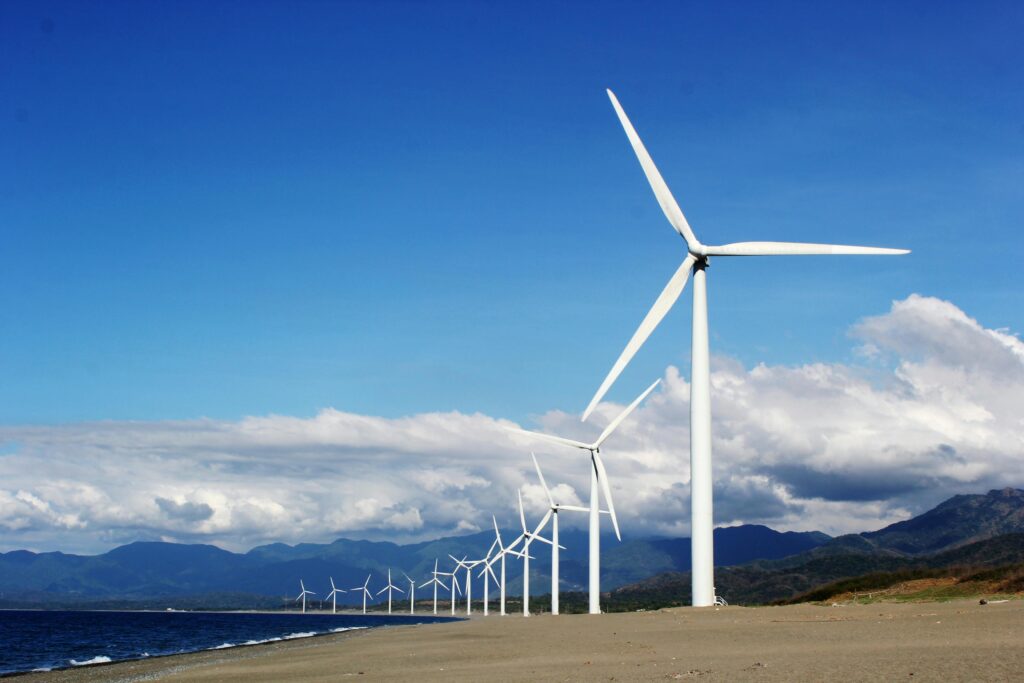
As consumer demand for a more clean and sustainable energy mix increases, and as government policies continue to change and adapt to curb global carbon emissions, a new global energy economy is emerging. Data and trends show that renewable energy has never been hotter.
The latest renewable energy technologies on the market today are extremely promising in reaching future targets for net zero emissions. Let’s take a look at some of the predictions for the future of energy production.
4 Predictions for the Future of Renewable Energy
China is Likely to Continue Leading the Way in Renewable Energy
China is the largest coal user in the world, but it’s also the world leader in renewable energy production. In 2020, China committed to having 1,200 gigawatts of renewable energy capacity by 2030, and it’s currently on track to reach this target in 2025, five years ahead of schedule. China has primarily been prioritizing solar farms and onshore and offshore wind energy projects.
If you combine China’s energy market with that of India, Europe, and the United States, the four markets together account for 80% of the capacity for global renewable energy expansion.
Hydropower, Wind Power, and Solar Power Will Continue to Be the Leading Choices for Renewable Sources
Hydropower is considered the most reliable renewable energy source on the market. In 2022, hydropower contributed 4,334.19 Terawatt-hours to global renewable energy generation. However there are still issues with regard to the environmental impacts associated with hydropower dams, and there are growing issues with regard to droughts. There was an uptick in hydropower in 2022 that was led by hydropower increases in Brazil, America, Canada, Turkey, and Vietnam. Despite this increase, however, hydroelectricity generation is predicted to decline by nearly 2% by the end of 2023, largely due to dry weather conditions in certain parts of the world.
Both solar and wind power remain as leading sources of renewable energy, largely due to their reputations as truly renewable and clean energy sources that have minimal environmental impacts while reducing dependence on fossil fuels. Solar energy provides a more predictable energy output than wind, and thanks to the decreasing cost of solar, the technology has never been more popular. In fact, solar costs dropped by more than 75% from 2010 to 2022.
View an animated graph of renewable electricity generation worldwide between 1965 to 2022.
Solar PV Capacity Will Remain the Epicenter of Renewable Growth
In 2022, 83% of the world’s power capacity was produced by renewable energy, with solar energy leading the way at 22% of the total capacity. The countries leading the way for installed solar capacity in 2022 were China, the United States, Japan, Germany, and India. The latest Solar Market Insight Report states that in the first quarter of 2023, solar photovoltaic accounted for 54% of all new electricity-generating capacity additions within the U.S. alone. The International Energy Agency has projected that solar photovoltaic installed power capacity will likely surpass coal by 2027, becoming the largest in the world.
The Market for Energy Storage Will Continue to Grow
As the popularity of wind and solar continues to rise worldwide, the demand for storage batteries to make 24/7 power supply from these renewable sources is growing. Some projections estimate that global energy storage capacity will grow about 23% per year until 2030. Take a look at some of the most promising energy storage technologies on the horizon.
FAQs About the Future of Renewable Energy
Is Renewable Energy On the Rise?
Yes. People around the world are concerned about climate change and have accepted the undeniable benefits of renewable energy. This paradigm shift is now being reflected by major growth in renewable energy capacity worldwide. In fact, global renewable energy capacity grew at a record rate in 2022, with renewables providing 83% of global energy.
Is 100% renewable energy feasible?
The short answer is yes. It is entirely possible for the world’s electricity to run off of renewable energy sources, but right now the transition is happening slowly over time. In order to reach net zero emissions by 2050, innovation will need to be ramped up. The recently updated Net Zero Emissions by 2050 Scenario (NZE Scenario) assumes the reliance on some technologies that are still in development and thus have not reached markets at a commercial scale. According to a report by the International Renewable Energy Agency (IRENA), “annual additions of renewable power capacity must grow three times the current level by 2030, if we want to stay on a pathway limiting global warming to 1.5°C.”
Which Renewable Energy Source Will Lead in the Future?
Hydropower, solar, and wind power are all leading the way in terms of popularity and growth in global capacity. While hydropower currently accounts for the highest installed capacity for renewables, solar and wind are both growing rapidly.
Learn About Community Solar Energy
With the rapid growth of solar energy as a whole, community solar will continue to grow as well. Find out how a solar energy sharing program works and how it can benefit communities around the country.









